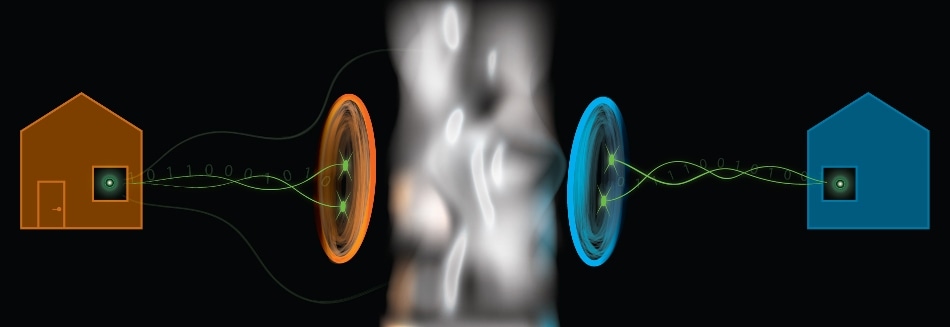Jan 8 2018
Griffith University researchers have overcome a significant difficulty in implementing a quantum effect for real applications.
 (Image credit: Griffith University)
(Image credit: Griffith University)
The scientists from the Centre for Quantum Dynamics have shown the way to meticulously investigate whether pairs of photons (particles of light) exhibit Einstein’s “spooky action at a distance,” even under unfavorable conditions resembling those outside the laboratory.
They showed that the effect, which is also called as quantum nonlocality, can still be corroborated even though numerous photons are lost due to scattering or absorption when they travel through an optical fiber channel from source to destination. The experimental research and methods have been reported in the Science Advances journal.
Quantum nonlocality is significant for the development of innovative global quantum information networks, which can ensure transmission security based on the laws of physics. Powerful quantum computers can be connected only in such networks.
Photons can be applied to make a quantum connection between two locations by making two photons to be “entangled,” such that measurement of one of the photons ascertains the characteristics of the other in the pair, and then directing one through a communication channel.
According to Professor Geoff Pryde, who headed the team, a quantum link must pass a rigorous test that validated the existence of quantum nonlocality between particles at each of the ends.
“Failing the test means an eavesdropper might be infiltrating the network,” stated Pryde.
“As the length of quantum channel grows, fewer photons successfully pass through the link, because no material is perfectly transparent and absorption and scattering take their toll.”
“This is a problem for existing quantum nonlocality verification techniques with photons. Every photon lost makes it easier for the eavesdropper to break the security by mimicking entanglement.”
For some time, devising a technique to investigate entanglement in the presence of loss has been a difficult challenge to overcome for the scientists across the world.
The researchers adopted a distinct strategy, namely, quantum teleportation, to prevent the loss of photons.
First author of the research, Dr Morgan Weston, stated that they chose the few photons that withstood the high-loss channel and teleported these lucky photons into another quantum channel which was efficient and clean.
“There, the chosen verification test, called quantum steering, could be done without any problem,” stated Weston.
“Our scheme records an additional signal that lets us know if the light particle has made it through the transmission channel. This means that the failed distribution events can be excluded up front, allowing the communication to be implemented securely even in the presence of very high loss.”
However, this upgrade is not very simple to do because the teleportation step mandates extra high-quality photon pairs on its own. The additional photon pairs have to be created and detected with exceptionally high efficiency to counteract the effect of the lossy transmission line.
The researchers were able to achieve this by using state-of-the-art photon source and detection technology, developed in collaboration with the US National Institute of Standards and Technology in Boulder, Colorado.
Despite the fact that the experiment was carried out in the laboratory, it investigated channels with photon absorption analogous to nearly 80 km of telecommunications optical fiber.
The goal of the researchers is to combine their technique with quantum networks that are being created by the Australian Research Council Centre of Excellence for Quantum Computation and Communication Technology, and investigate it in real-time.